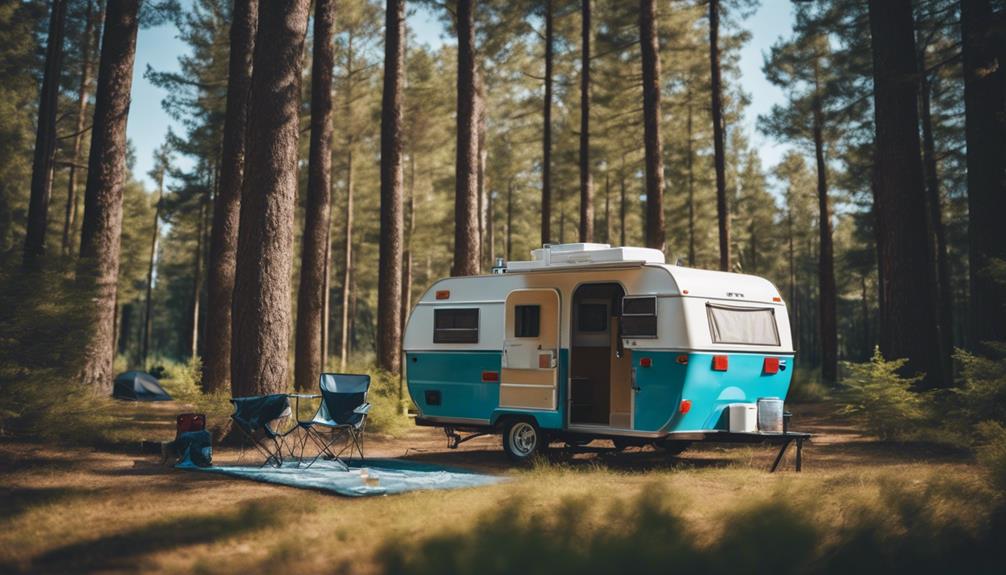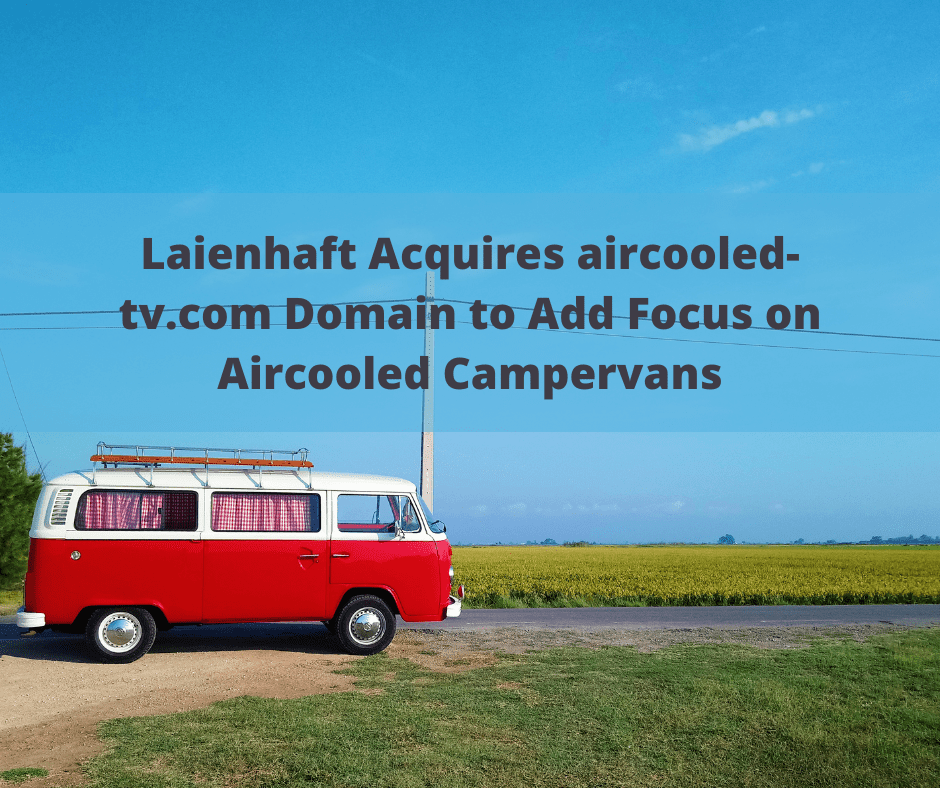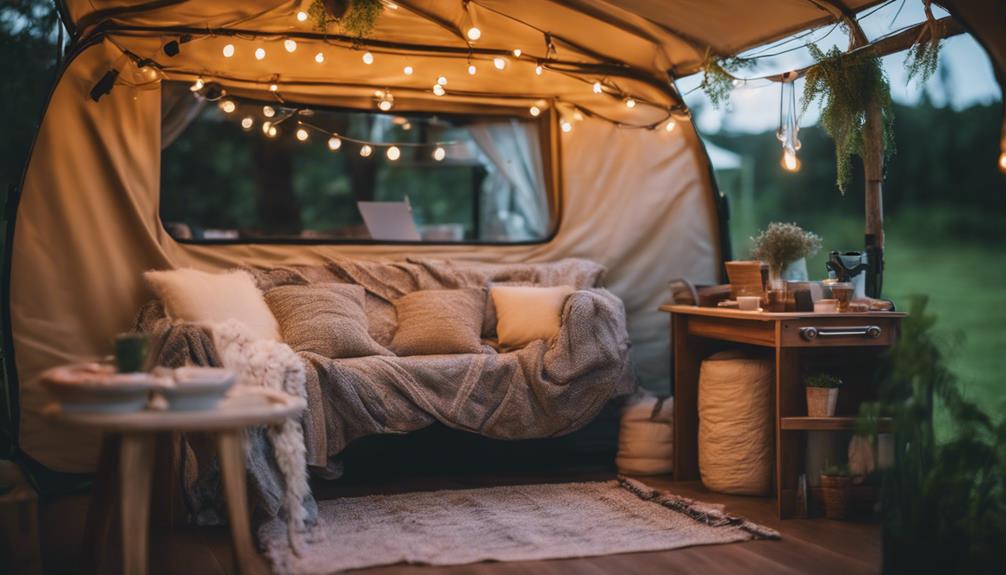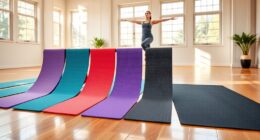Adding AC to your pop-up camper is a great way to stay comfortable on hot adventures. Start by choosing a portable unit with a BTU rating between 5,000 and 8,500, ensuring it matches your generator's power needs. Consider both roof-mounted and portable options; each has its pros. Position the AC in shaded areas for better efficiency and maintain ventilation to let hot air escape. Keep an eye on humidity by regularly clearing water and boosting airflow. With some clever tricks and tips, you'll optimize your cooling setup. Stick around for more insights and advice to keep your travels invigorating!
Key Takeaways
- Choose a portable AC unit with a BTU rating between 5,000 to 8,500 for effective cooling in your camper.
- Ensure generator compatibility by matching the AC unit's starting and continuous running wattage to your generator's capacity.
- Install the AC unit properly, considering roof-mounted, portable, or external options based on your camper's layout and power source.
- Enhance cooling efficiency by using reflective tarps, proper ventilation, and regular maintenance of AC filters.
Importance of AC in Campers
Adding an AC unit to your pop-up camper is vital for staying cool and comfortable, especially during hot summer trips. AC units, typically ranging from 5,000 to 8,500 BTUs, can greatly lower the ambient temperature inside your camper. This ability to reduce heat not only enhances your comfort but also helps combat humidity levels, which can improve your sleeping conditions and prevent condensation issues that often arise in enclosed spaces.
Proper ventilation is essential for your portable AC unit's effectiveness. You'll need to set up exhaust hoses to vent hot air outside, ensuring that your camper remains a pleasant retreat. Keep in mind that AC units tend to perform better in shaded areas rather than in direct sunlight, so consider your campsite's positioning.
Investing in a portable AC unit is a practical solution for pop-up campers without built-in cooling systems. For around $350, you can enjoy a more comfortable camping experience, making those summer adventures much more enjoyable. So, don't overlook the importance of AC units when planning your next trip; they can make all the difference in beating the heat.
Choosing the Right Portable AC
When you're picking a portable AC for your pop-up camper, the BTU rating is key for effective cooling.
Confirm the unit you choose works well with your generator, as some models need more power to operate.
BTU Rating Considerations
Choosing the right portable AC for your pop-up camper requires careful consideration of its BTU rating, ideally between 5,000 and 8,500 BTUs for best cooling in small spaces. This range guarantees effective cooling while being manageable for your power source.
Here are key factors to keep in mind regarding BTU ratings:
- Cooling Needs: Assess the size of your camper to determine the necessary BTU rating.
- Generator Compatibility: An 8,500 BTU unit typically needs an 1800-watt generator to start; verify your generator meets this requirement.
- Startup Power: A 2000-watt generator might struggle with units that have high startup wattage, so verify specifications.
- Temperature Influence: Be aware that external temperatures and shading can impact cooling efficiency, so consider placement carefully.
Generator Compatibility Check
Evaluating your generator's compatibility with a portable AC unit is vital to guarantee efficient cooling during your camping trips. Start by checking the starting wattage of the AC unit you're considering. Many 8,500 BTU units require around 1,800 watts for startup, which could be too much for a standard 2,000-watt generator. You don't want to overload your generator, so confirm the AC's continuous running wattage also fits within your generator's limits.
Next, verify the specific power requirements of the AC unit. Some models may have lower starting wattage, making them compatible with a standard generator. This generator compatibility check is important to avoid any issues during your stay.
Additionally, consult campground rules regarding generator operation hours to make certain you're not disrupting your neighbors with noise during quiet hours.
Generator Power Requirements
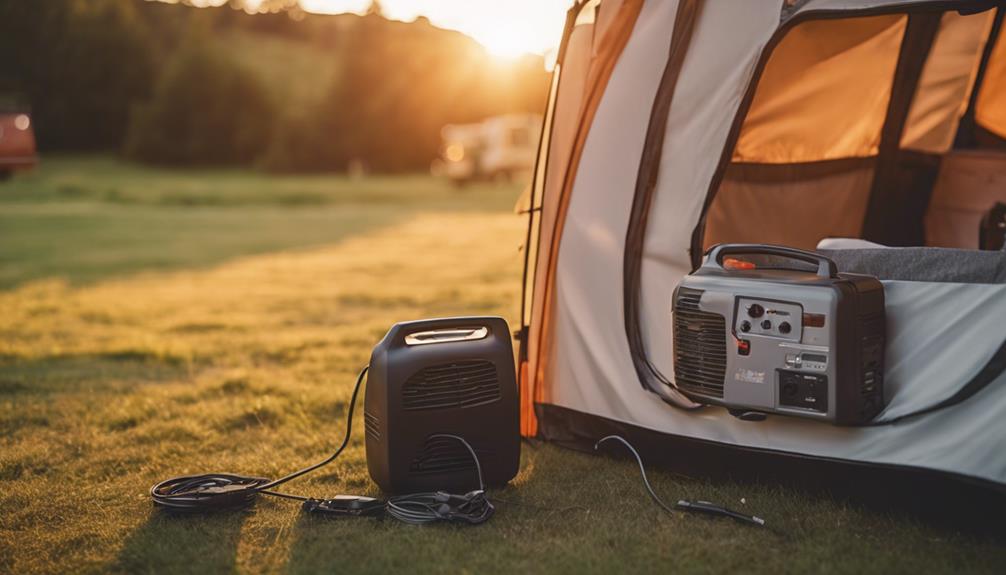
Understanding generator power requirements is essential for safely and effectively running an AC unit in your pop-up camper. A typical 8,500 BTU portable AC unit usually requires an 1800-watt generator for startup. However, a 2000-watt generator might struggle to start some units due to their high initial power demands.
To guarantee you're prepared, consider the following points:
- Check campground rules regarding generator operation hours.
- Use a heavy-duty power cord to enhance power delivery and prevent overload.
- Monitor energy consumption to stay within your generator's capacity.
- Consider external factors like temperature and shading, which can affect cooling efficiency.
Installation Methods for AC Units
When it comes to installing an AC unit in your pop-up camper, you'll find several effective methods depending on your setup and space constraints.
If your camper has available vents, a roof-mounted AC unit is your best bet. This option provides efficient cooling while keeping your interior space free for other essentials.
If roof installation isn't feasible, consider using a portable AC unit. You'll need a direct power source and proper ventilation to expel hot air. Be sure to monitor the drainage for condensation, as this can lead to flooding if not managed properly. You might need to frequently dump water or use a hose for effective drainage.
Another option is an external AC unit. You can position it outside and use ducting to channel cool air into the camper, which allows for airflow without making structural changes.
Just remember to factor in your camper's power requirements; some portable units require a generator with sufficient wattage—usually around 2000 watts for startup.
Choose the method that works best for your camper, and enjoy the cool comfort during your adventures!
Cooling Efficiency and Tips
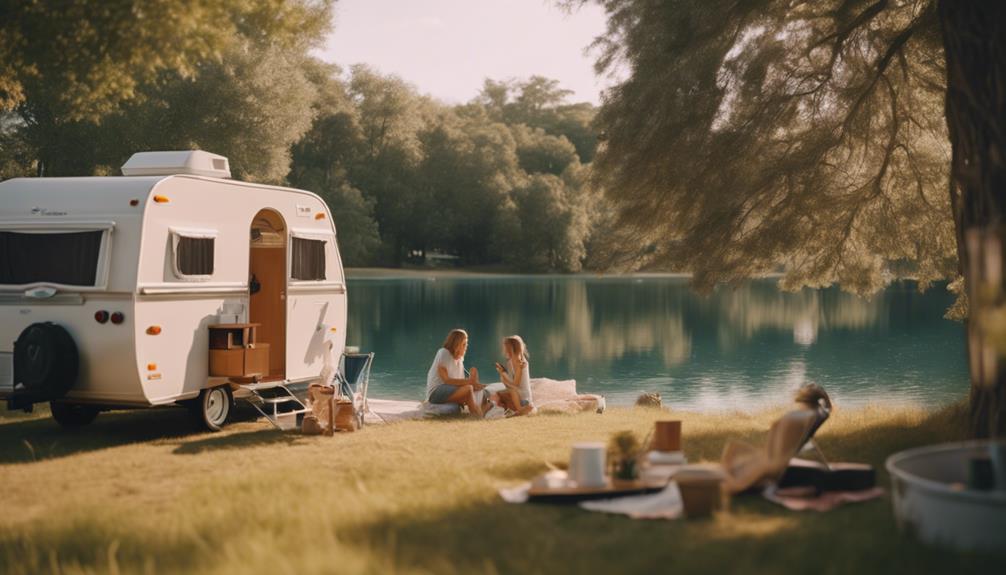
To keep your pop-up camper cool, focusing on insulation techniques is key.
You'll also want to make certain proper ventilation and consider using cooling accessories for maximum comfort.
Let's explore how these strategies can enhance your cooling efficiency while you're out enjoying the great outdoors.
Insulation Techniques for Efficiency
Effective insulation techniques can dramatically boost your pop-up camper's cooling efficiency, guaranteeing a more comfortable experience during hot weather. By implementing these strategies, you'll minimize heat absorption and maintain a cooler interior.
- Use reflective tarps or Arctic outdoor survival blankets to bounce sunlight away, reducing heat absorption.
- Close off unused bunk ends with curtains to limit heat exchange with the outside.
- Regularly clean your AC unit's filters for ideal airflow and cooling performance.
- Install foil insulation around windows to cut down heat transfer, especially during peak temperatures.
Proper Ventilation Importance
Proper ventilation is vital for keeping your pop-up camper cool, as it allows hot air to escape and guarantees your AC unit operates effectively. To achieve proper ventilation, make sure the exhaust hose of your AC unit is installed correctly. This prevents heat from radiating back into the camper, enhancing cooling performance.
Additionally, placing the AC unit in a shaded area can considerably improve its effectiveness. When the unit isn't subjected to direct sunlight, it can cool better and use less energy. You should also make certain adequate airflow around the AC unit. This helps prevent condensation issues, which can lead to discomfort and potential mold growth inside the camper.
Regular maintenance is important too. Check and clean the AC filters regularly to maintain peak performance. Clogged filters restrict airflow and can diminish cooling efficiency, leading to a hot and stuffy environment.
Cooling Accessories to Consider
Enhancing your pop-up camper's cooling efficiency can be easily achieved with the right accessories, making your outdoor experience much more enjoyable.
Here are some cooling accessories to take into account that can help you stay comfortable during your adventures:
- Reflective tarps or space blankets: These can minimize heat absorption and boost your AC unit's performance.
- Regularly cleaned AC filters: Keeping these clean guarantees ideal airflow, making certain your AC operates efficiently throughout your trip.
- Curtains for unused bunk ends: Installing these can trap cooler air inside, enhancing the overall cooling effect.
- Portable fans: Using these alongside your AC unit helps circulate cool air more effectively, creating a more pleasant atmosphere.
Managing Humidity and Condensation
Managing humidity and condensation in your pop-up camper is vital for maintaining a comfortable and healthy environment during hot, sticky weather.
Using a portable AC unit not only cools the air but also reduces humidity levels inside your camper, enhancing your overall comfort. However, you must actively manage condensation to prevent water buildup.
One way to do this is by frequently dumping the collected water from your portable AC or using a drainage hose to minimize flooding risks. Maintaining airflow is equally important; it helps prevent excessive moisture buildup that can lead to mold and mildew. Keep windows and vents slightly open to encourage air circulation.
Additionally, regularly cleaning the filters in your portable AC will guarantee it operates efficiently, maximizing humidity control. You can also consider using reflective insulation materials, like space blankets, to reduce heat absorption and improve the cooling efficiency.
This combination will help you stay cool while managing humidity effectively, making your camping experience much more enjoyable. So, take these steps to keep your pop-up camper a comfortable haven even in the most humid conditions!
Creative Cooling Solutions
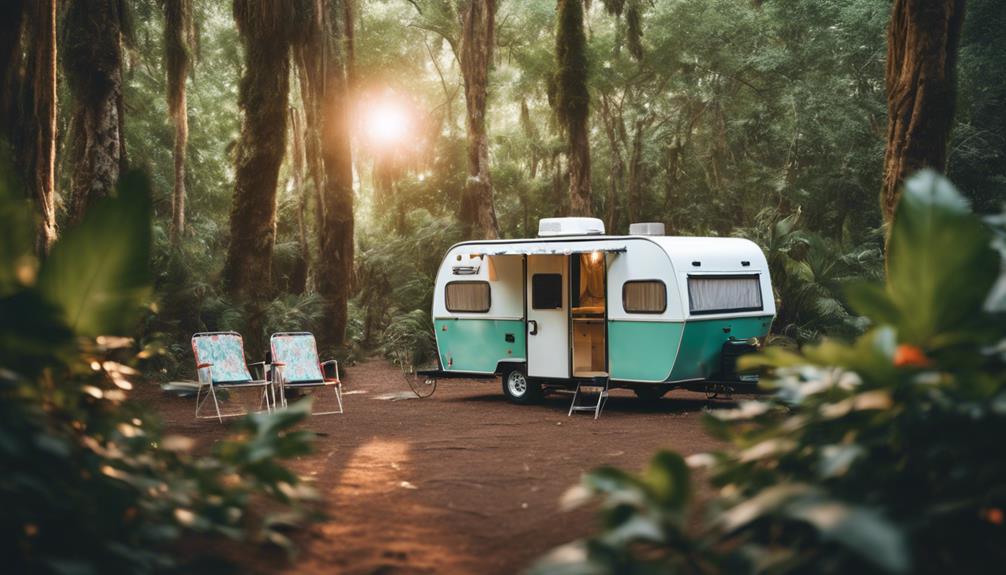
There are several creative cooling solutions you can explore to keep your pop-up camper comfortable during hot weather. With the right approach, you can maximize the effectiveness of your AC unit and enhance your overall camping experience. Here are some ideas:
- Reflective Tarps or Survival Blankets: Hang these outside your camper to reduce heat absorption and improve your AC's performance.
- Ducting a Standard AC Unit: Position a unit outside and use flex ducting to channel cool air inside without making structural changes.
- DIY 'Redneck Ice A/C': Freeze water bottles and place them in front of fans to create a makeshift air conditioning system that's budget-friendly.
- Portable Fans: Combine these with your AC to boost airflow and distribute cool air more effectively throughout your camper.
Community Experiences and Recommendations
Many campers have shared their experiences with portable AC units, praising their effectiveness in transforming hot pop-up camper environments into cool, comfortable retreats. Users often recommend models like the Black Decker, especially when built-in AC units aren't an option. Community experiences highlight how these units can greatly lower interior temperatures; for instance, one camper reported a drop from 82 to 73 degrees Fahrenheit, showcasing the potential for summer comfort.
Proper insulation techniques are also essential. Campers frequently discuss using reflective survival blankets to maintain cooler temperatures inside, enhancing the performance of their AC units.
You'll want to reflect on your power source too. Many campers opt for generators that can handle the wattage requirements of their AC units, ensuring they stay cool even during power outages.
Engaging in online communities, like www.popupexplorer.com, can provide you with additional insights and shared experiences on effective cooling methods and AC setups tailored specifically for pop-up campers.
Frequently Asked Questions
Can You Add an AC Unit to a Pop-Up Camper?
Yes, you can add an AC unit to your pop-up camper. Consider portable units or roof installations, and guarantee proper ventilation. Engaging with online communities can help you find the best options for your needs.
Can Pop-Up Campers Have Air Conditioning?
Sure, pop-up campers can totally have air conditioning! You'll enjoy the cool breeze while camping, but don't forget to contemplate power sources and proper installation—because who wouldn't want a mini icebox on wheels, right?
How to Keep a Popup Camper Cool?
To keep your pop-up camper cool, use reflective tarps, guarantee proper ventilation, and position your AC unit in shaded areas. Close unused bunk ends and clean filters regularly for ideal airflow and comfort.
Can I Add an AC to My Camper?
Yes, you can add an AC to your camper. Consider a portable unit or a rooftop installation if your structure supports it. Guarantee proper ventilation and power connections to keep your space cool during hot days.
Conclusion
Staying cool in your pop-up camper can make all the difference on your adventures, right?
By choosing the right portable AC, understanding power needs, and employing effective installation methods, you can create a comfortable oasis wherever you park.
Don't forget to manage humidity and explore creative cooling solutions for those extra-hot days.
With these tips in mind, you're all set to enjoy your outdoor escape without sweating the small stuff!
Happy camping!

